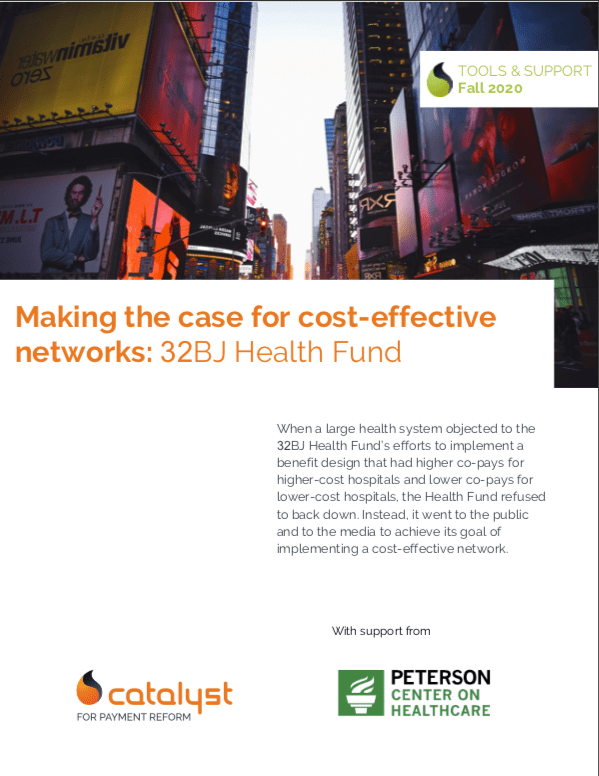Making the Case for Cost-Effective Networks: 32BJ Health Fund
Find out how 32BJ Health Fund publicized hospital prices across New York City to achieve its goal of implementing a cost-effective network.
In a world where hospital prices are not transparent and vary widely, health care purchasers need first to analyze price and quality variation and then build a benefit design and health care purchasing strategy tailored to their market. But a purchaser’s ability to implement strategic benefit programs may be impeded by contract disputes between carriers (or third-party administrators) and health systems.
This case study describes how a large health system in New York City objected to the 32BJ Health Fund’s efforts to implement a benefit design that had higher co-pays for higher-cost hospitals and lower co-pays for lower-cost hospitals. Instead of backing down, the Health Fund went to the public and to the media to achieve its goal of providing high-quality and affordable health benefits to its covered population.
Written exclusively to help self-funded employers and other health care purchasers learn from one another and share new strategies, this case study covers:
- How health care cost inflation and lack of price transparency led the Health Fund to explore variations in hospital prices.
- The Health Fund’s development of apples-to-apples price comparisons for a set of common procedures and episodes of care.
- Why the Health Fund selected a tiered approach for its cost effective network, including information on their innovative member communications strategy featured in a past webinar.
- How the Health Fund used a public communications campaign to help its third-party administrator overcome anticompetitive contract provisions.
- Plus, a mini-case study on an alternative approach to framing carrier-hospital contract disputes, based on Self-Insured Schools of California’s educational mail campaign.
CPR interviewed Sara Rothstein, Director of the 32BJ Health Fund, to inform this case study. CPR also interviewed John Stenerson, Deputy Director of SISC, to inform the included mini-case study as well as the case study Guiding Members to High-Value Choices through Reference Pricing.
As a health care purchaser, you can log in to get FREE access!
No account? No problem. Click HERE to create your new account. Or click Log In > Forgot Password in the upper-right hand corner to reset your password.
Type: Case Study
$49.00
$49



